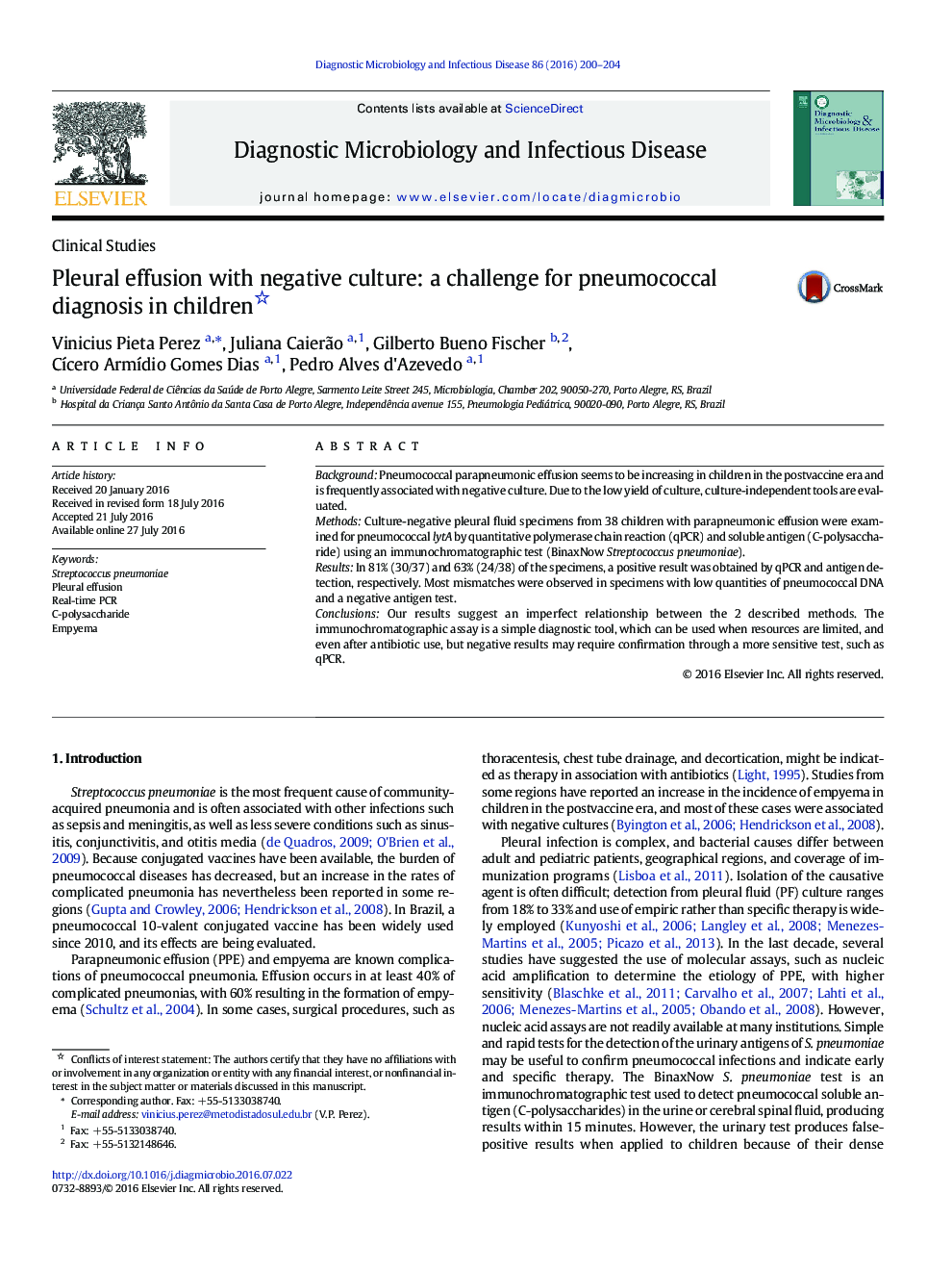| Article ID | Journal | Published Year | Pages | File Type |
|---|---|---|---|---|
| 3346769 | Diagnostic Microbiology and Infectious Disease | 2016 | 5 Pages |
•Culture independent methods are indicated in children with pleural effusion.•Results of BinaxNow and qPCR for S. pneumoniae show imperfect relationship.•Pleural qPCR is a valuable tool in diagnosis of pneumococci after antimicrobial therapy.
BackgroundPneumococcal parapneumonic effusion seems to be increasing in children in the postvaccine era and is frequently associated with negative culture. Due to the low yield of culture, culture-independent tools are evaluated.MethodsCulture-negative pleural fluid specimens from 38 children with parapneumonic effusion were examined for pneumococcal lytA by quantitative polymerase chain reaction (qPCR) and soluble antigen (C-polysaccharide) using an immunochromatographic test (BinaxNow Streptococcus pneumoniae).ResultsIn 81% (30/37) and 63% (24/38) of the specimens, a positive result was obtained by qPCR and antigen detection, respectively. Most mismatches were observed in specimens with low quantities of pneumococcal DNA and a negative antigen test.ConclusionsOur results suggest an imperfect relationship between the 2 described methods. The immunochromatographic assay is a simple diagnostic tool, which can be used when resources are limited, and even after antibiotic use, but negative results may require confirmation through a more sensitive test, such as qPCR.
